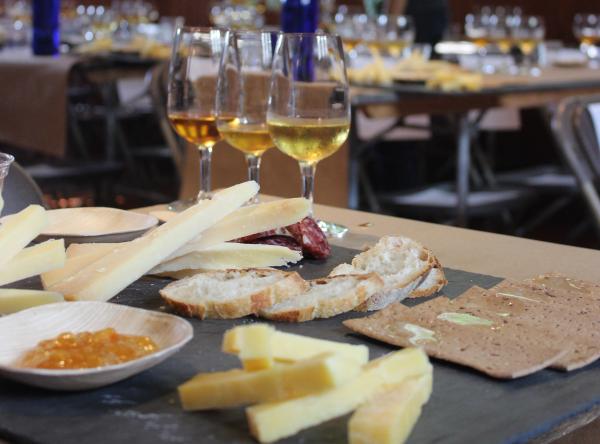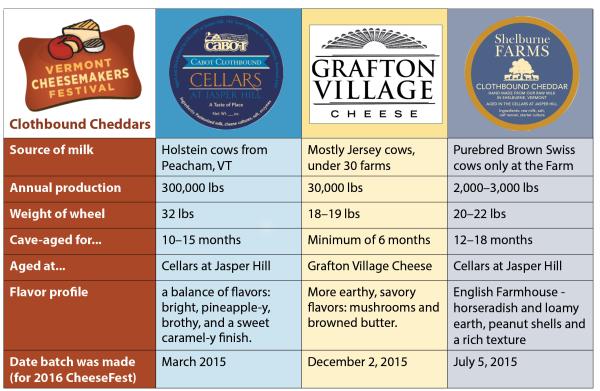Similar but Different: Clothbound Cheddars at VT Cheese Fest 2016
“Clothbound” has always been a bit of a mystery to me: Magic happens in a “cave” somewhere, and you get this amazing cheese. Now I know more. A lot more. So here’s the rap behind the wrap.
You can learn a lot about clothbound cheddar here, but the highlights are:
- It’s a traditional English method of aging cheddar.
- Curds are bound in a cheesecloth, sealed with lard, and aged in a cave (usually for about a year)
- The cave environment is both warmer and wetter than a normal aging room, which affects the breakdown of fats and proteins in the cheese. This gives the clothbound its essential flavor profile (also, its cultivated rind of microflora)
- Clothbound cheese loses more moisture as it ages than regularly aged cheddar (15-20% of its body weight). Basically, it can be a drier, more crumbly cheese.
- The general care of clothbound includes flipping and brushing.
How did the three clothbound cheddars presented “stack” up? (As befits the collegial world of Vermont cheesemaking, there was no mention of “better than” or “not as good as.” The talk simply outlined what makes each cheddar its own.) The details lay out pretty neatly in a table:
What stands out for me in this table, other than the huge swing in annual production numbers (whoa!), is where the milk comes from.
Shelburne Farms clothbound cheddar (in fact, all our cheddar), comes from milk made right here. At the Farm. By our purebred Brown Swiss cows. That's a pretty special thing.
I guess that's why we love our cheddar so much: because it has that direct, flight-of-the-arrow connection between this place and the product.
As Rory says, “In our cheesemaking, we’re just trying not to mess it up” -- the milk, that is.
As the presenters moved through the tasting and pairings (see below), I realized I have a long way to go before I’ll be able to identify cheddar flavor notes like “pineapple” or “caramelized onions.” But as Rory reminded everyone in the room, it doesn’t really matter. The point is: just enjoy the cheese -- all the similarities and differences. Discerning flavors and tastes is just another way to expand on that joy. Just like Cheese Fest itself!
UPDATE: We've submitted some of our clothbound (and other cheddars) to the American Cheese Society Judging and Competition, which takes place this week. Rory and some of our cheesemakers are on their way to Iowa for this annual conference and event. We'll keep you posted on results!
Presenters:
- Zoe Brickley, Cabot Clothbound, Jasper Hill Farm, Sales, Marketing, and Education
- Vince Razionale, Grafton Clothbound Cheddar
- Rory Stamp, Shelburne Farms Clothbound Cheddar, Cheese Sales Manager
Vermont Clothbound Cheddars and Pairings:
Cabot Clothbound
- VT99 Cured Salami (Craftsbury)
- Eden Honeycrisp Ice Cider (Eden)
Grafton Vermont Clothbound
- Blake Hill Orange Lime & Ginger Marmalade (Grafton)
- Boyden Valley Winery Vermont Ice Wine (Cambridge)
Shelburne Farms Clothbound
- Castleton Rye Crackers (Windsor)
- Northwoods Apiaries Raw Honey (Westfield)
- Shelburne Vineyard Duet Ice Wine (Shelburne)



